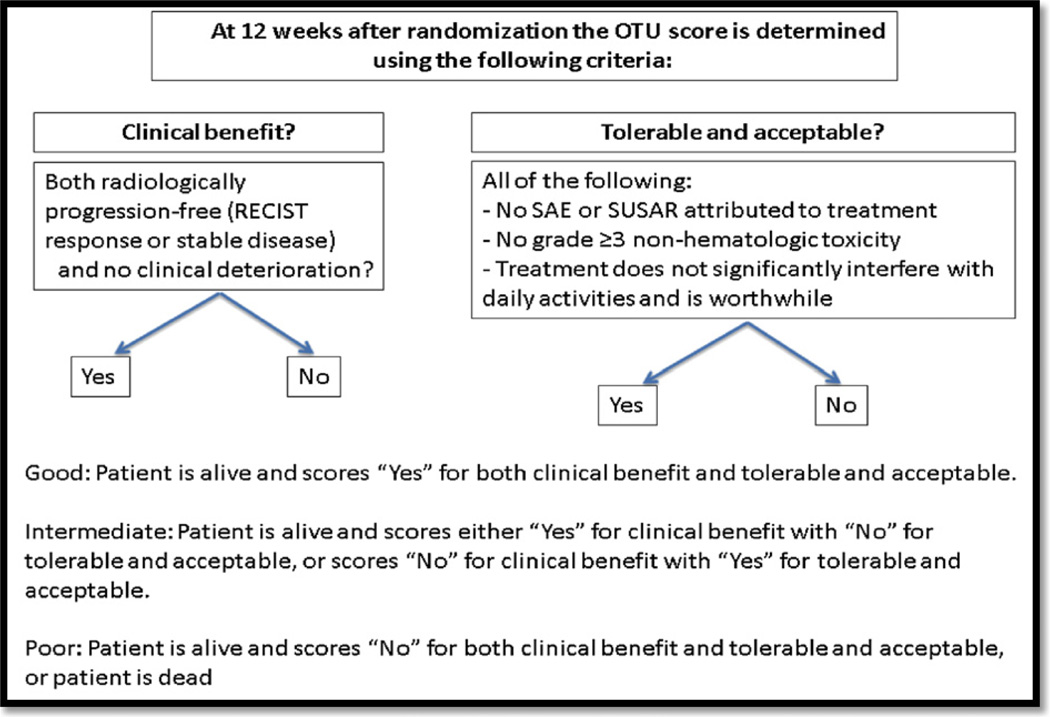Fig. 1.
Overall treatment utility (OTU) schematic. Adapted from Seymour et al. [14]. OTU is a novel composite measure to determine if therapy was meaningful from both the patient's and the clinician's viewpoint. OTU was scored at 12 weeks and was designated as poor, intermediate, or good. Poor OTU indicated either disease progression or clinical deterioration and either a major negative treatment effect attributed to therapy, or an episode of grade ≥ 3 non-hematologic toxicity or patient perspective that treatment significantly interfered with normal daily activities and has not been worthwhile. Intermediate OTU signified either RECIST response or SD with no clinical deterioration in addition to a significant negative treatment effect or lack of patient acceptability, or disease progression or clinical deterioration combined with no negative treatment effect, or patient acceptability. Good OTU was defined as RECIST response or SD associated with no major negative treatment effects and positive patient acceptability.

